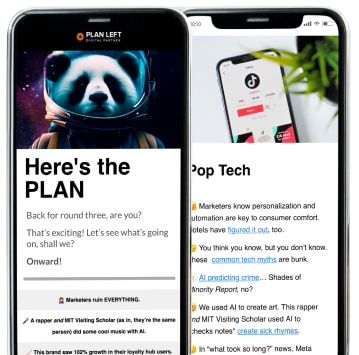
Streamlined user experiences are more than just nice-to-have—they can make or break your online success. Advanced user experience (UX) strategies and tactics smooth out customer journeys and boost conversion rates, user engagement, brand reputation, and customer loyalty.
Your Cue to Check User Experiences
Before we delve into specific UX elements, it’s important to recognize the signs that your website might be falling short. Here are some red flags that signal it’s time for a UX audit:
- High bounce rates
- Low conversion and engagement rates
- Negative reviews
- Low click-through rates (CTR) and high cart abandonment
- Minimal social engagement
If you’re experiencing any of these issues, it’s time to take a closer look at your user experience.
User Experience Factors You’ve Been Overlooking
Sometimes, it’s the subtle design and content changes that can have the most significant impact on the customer journey. Let’s explore some often-missed UX elements that could transform your website’s performance.
Content Is Still King
With Google’s shift towards prioritizing user-first content and experiences, your website’s content plays a crucial role in UX. Here are some key considerations:
- Buyer Personas: Are you addressing the right audience? Always know who you’re writing for before creating content.
- Clarity and Comprehensiveness: Ensure your content is clear, up-to-date, and thorough.
- Hyperlink Differentiation: Users should be able to anticipate what will happen when they click a link.
- Information Presentation: Use bullet points to highlight important information.
- Content Structure: Implement clear headings and subheadings for easy navigation.
- Value Proposition: Above all, make sure your content provides real value to your visitors.
Website Design and Accessibility Are Equally Important
Your website’s design and accessibility can significantly impact user experience. Consider these often-overlooked factors:
- White Space: According to Crazy Egg, white space around text and titles increases user attention by 20%.
- Consistency: Maintain a consistent interface throughout your site. Create and stick to a style guide.
- Visual Elements: Use original, high-quality images that align with your brand.
- Navigation: Keep your design simple with easy-to-use navigation.
- Color Psychology: Choose colors that enhance readability and align with your brand image.
- Accessibility: Ensure your website is ADA-compliant to cater to all users.
Provide a Mobile-First User Experience
With more than half of all web traffic coming from mobile devices, a mobile-optimized experience is crucial. Focus on:
- Responsive Design: Your website should adapt seamlessly to different screen sizes.
- Easy Navigation: Simplify your menu structure for mobile users.
- Page Speed: Optimize your site’s performance through minimized code, optimized images, and browser caching.

Source: Plan Left
Clear Contact Information and Meaningful CTAs
Make it easy for users to interact with your brand:
- Contact Information: Make sure your contact details are accurate and easy to find.
- Engagement: Respond promptly to reviews and messages.
- Community Building: Implement an email newsletter sign-up to foster a sense of community.
- Social Proof: Display testimonials or reviews to build trust.
- Clear CTAs: Use self-explanatory and easily locatable call-to-action buttons.
Remember, user experience is an ongoing process—continually gather feedback and use your insights to provide a desirable, accessible, and facilitated online journey.
Explore Latest Posts
5 Signs Your Business Is Ready to Own Its Marketing (Without an Agency) The default assumption in business is that ... read more
December 31, 2025
From Feast to Famine: How to Create Predictable Revenue in Your Business Three months ago, you couldn't take on another ... read more
December 29, 2025
Why Competing on Price Is Killing Your Margins (And What to Do Instead) When a prospect asks "how much do ... read more
December 25, 2025
Essential Strategies for Entrepreneurs
Get Actionable Business Insights & Marketing Tips
Our newsletter delivers real-world strategies from entrepreneurs who’ve been exactly where you are.
Sign up now for:
- Actionable growth strategies that work
- Insider tactics for attracting top talent
- Real-world case studies from successful founders
- Emerging tech trends that drive innovation
- Pragmatic marketing approaches for visionary leaders




